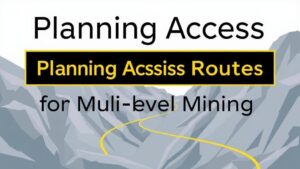Using Topographic Maps to Locate Gold-Bearing Terraces
Using Topographic Maps to Locate Gold-Bearing Terraces
Topographic maps are essential tools in the field of geology and prospecting, providing crucial insights into the Earths surface features. They indicate elevation, landforms, and the spatial relationships between different terrains, enabling prospectors to identify potential gold-bearing terraces. This article delves into how topographic maps can be utilized effectively to locate these promising geological formations.
Understanding Topographic Maps
Topographic maps illustrate three-dimensional landscape features in two dimensions through contours and symbols. primary components of a topographic map include:
- Contour Lines: These lines connect points of equal elevation, indicating the shape and slope of the terrain. Closely spaced lines denote steep slopes, while widely spaced lines represent gentle slopes.
- Legend: This section explains the symbols used on the map, such as water bodies, roads, and vegetation.
- Scale: The scale indicates the relationship between distances on the map and real-world distances, allowing for accurate measurements.
Identifying Gold-Bearing Terraces
Gold-bearing terraces are flat or gently sloping areas formed by ancient river systems. These terraces are significant because they can be locations where gold has accumulated over geological time. To locate them using topographic maps, consider the following steps:
- Research Geological History: Familiarize yourself with the areas geological past. Regions once rich in gold, such as the Sierra Nevada, often have recognizable terraces where gold is deposited.
- Locate River Valleys: Identify valleys on the map by looking for low-lying areas. These valleys are often associated with historical river courses, which are potential sites for gold.
- Examine Contour Patterns: Look for distinct horizontal contour lines indicating flat terraces. more level the area, the greater the potential for finding preserved gold deposits.
Case Studies: Successful Gold Prospecting
The effectiveness of using topographic maps in gold prospecting can be seen in several successful case studies:
- The Klondike Gold Rush: Prospectors utilized topographic maps to navigate the rugged terrain of Alaskas Bonanza Creek, leading to significant discoveries of gold-bearing gravel terraces.
- Californias Mother Lode: By studying topographic variations, miners traced ancient riverbeds, uncovering rich placer deposits along the Sierra foothills.
Real-World Applications
In practical terms, topographic maps serve multiple purposes beyond locating gold-bearing areas:
- Land Use Planning: Understanding terrain features aids in planning for construction, agriculture, and conservation.
- Environmental Research: Scientists use these maps to study watershed areas, sediments, and ecosystems where mineral deposits may exist.
Actionable Takeaways
Utilizing topographic maps to locate gold-bearing terraces is a strategic approach in prospecting. Here are some actionable steps to enhance your prospecting efforts:
- Acquire high-quality topographic maps for your area of interest, available from geological survey organizations.
- Invest time in understanding the geological history and formation of local rivers that may have once been gold-laden.
- Consider taking a field trip to the identified locations to validate the information from your maps and conduct thorough prospecting.
By combining geological knowledge with the insights provided by topographic maps, prospectors can significantly increase their chances of finding gold-bearing terraces, turning theoretical exploration into practical success.



